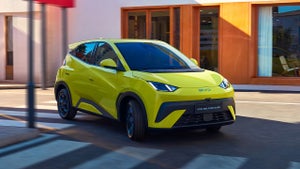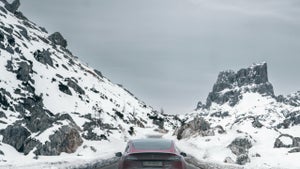News
A Cognitive Frontier: International Space Station’s Pioneering Mission to Cultivate Human Brains
The purpose of this project is to investigate new treatments for neurological disorders.

- August 4, 2023
- Updated: March 7, 2024 at 2:56 PM

From Alzheimer and Parkinson‘s to epilepsy and migraines, neurological disorders affect nearly 1 in 6 people worldwide, which amounts to about 1 billion individuals.
In response to this situation, biotechnology companies like Axonis are dedicated to researching new treatments to alleviate the effects of these disorders or even eradicate them when possible. But guess who their new collaborator is? None other than the International Space Station (ISS).
For their next research, Axonis has sent stem cells to the ISS with the aim of developing miniature, spherical, and simplified versions of the human brain. These stem cells are derived from human skin cells and have the ability to transform into any type of cell in the body under the influence of certain chemical signals.
Once on the ISS, researchers will stimulate the cells to begin forming neurons, which are the cells responsible for transmitting chemical and electrical signals in the brain, as well as astrocytes and microglia, other types of cells found in the brain that perform various tasks such as defending it against infections and providing structural support.

Once these three types of cells have formed, they will self-assemble, sticking together and forming small spheres called brain organoids, which can be later used to model human brain diseases and test new drugs.
According to NASA, the research team will evaluate the mini-brains in the microgravity of the ISS because in Earth’s gravity, the organoids can be difficult to cultivate in the three-dimensional form that is required for accurate modeling.
Indeed, the team will not only focus on cultivating these tiny brains. Another one of their missions will be to test a gene therapy on the three-dimensional models. This therapy is designed to specifically target neurons and not other types of cells, so the team will evaluate the precision with which the treatment moves and delivers its payload exclusively to the neurons.
Some of the links added in the article are part of affiliate campaigns and may represent benefits for Softonic.
Publicist and audiovisual producer in love with social networks. I spend more time thinking about which videogames I will play than playing them.
Latest from Pedro Domínguez
You may also like
 News
NewsBYD’s best-selling EV arrives in Europe as the Dolphin Surf: $26,000
Read more
 News
NewsReaching Everest in a Tesla? This owner had a brilliant idea: gasoline
Read more
 News
NewsHouse Republicans Pass Tax Proposal That Threatens Clean Energy Jobs
Read more
 News
NewsRyanair heads into its most expensive summer yet: it sold its tickets too cheaply
Read more
 News
NewsNotebookLM: What it is and how Google’s AI organizes our research
Read more
 News
NewsGoogle gives away four months of its best AI if you already had Gemini Advanced: How to use the offer
Read more